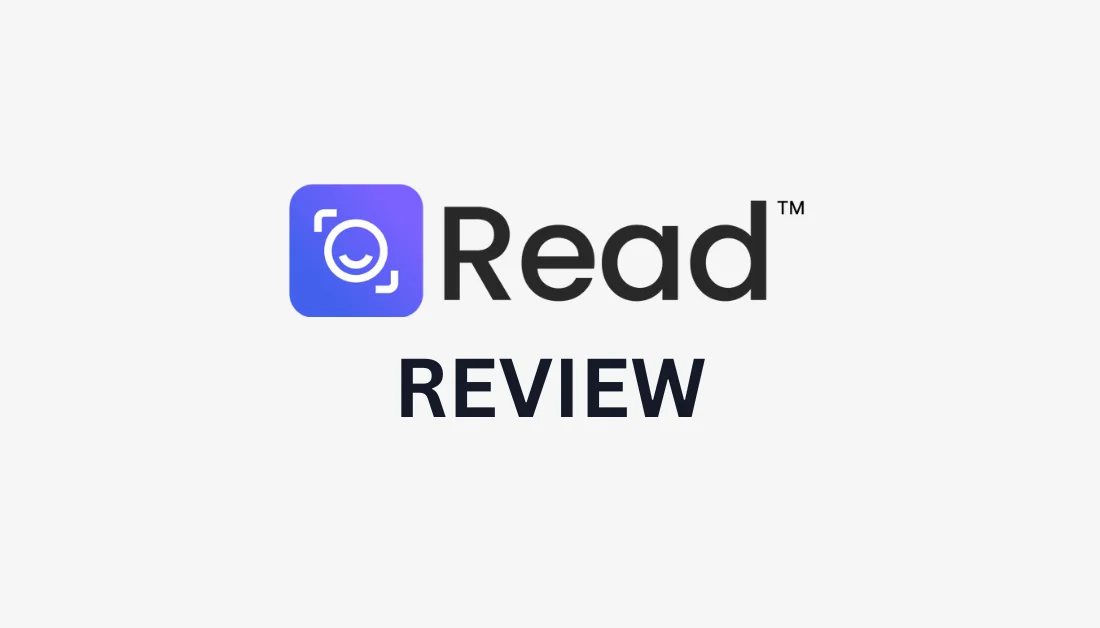It sounds like you’re looking for a review of Read AI! Let me give you a detailed overview of what Read AI is and what people think about it.
What is Read AI?
Read AI is a tool that provides real-time meeting analytics. It integrates into video conferencing platforms (like Zoom, Microsoft Teams, and Google Meet) to help users extract insights from their meetings. This AI-driven software analyzes various aspects of virtual meetings, including speaker sentiment, talk-time distribution, meeting engagement, and more. Its goal is to improve the quality of meetings by offering actionable insights and making meetings more productive.
Key Features:
Here are some of the standout features of Read AI:
- Sentiment Analysis:
One of Read AI’s most talked-about features is its real-time sentiment analysis. It gauges the emotional tone of the meeting, detecting whether the conversation is positive, neutral, or negative. This can be particularly useful for managers who want to understand team dynamics or client meetings where gauging emotion is crucial. - Speaker Insights:
The software breaks down speaking time by participants, helping organizers understand who dominated the conversation and who might not have had a chance to speak. It also provides real-time prompts if certain participants are being excluded from the conversation. - Engagement Tracking:
Engagement is a tricky thing to measure in virtual meetings, but Read AI uses metrics such as video on/off status, muting behavior, and even facial expressions (depending on platform capabilities) to estimate engagement levels. - Actionable Summaries:
After a meeting, Read AI generates a summary of key points, along with a sentiment score and recommendations for improving future meetings. This can be a valuable resource for team leads or HR personnel. - Integrations:
Read AI is designed to work seamlessly with major video conferencing platforms. It can integrate with Zoom, Microsoft Teams, Google Meet, and other tools, meaning that the learning curve for using the product is low if you’re already familiar with those platforms.
Benefits:
- Improves Meeting Efficiency: By showing real-time data, Read AI helps guide meetings toward more inclusive, efficient, and focused discussions.
- Sentiment Awareness: Understanding the emotional tone can help identify problems early, like when a discussion becomes too negative or if certain people are left out.
- Post-Meeting Analytics: The summaries and insights provided after a meeting help team members reflect on how they can improve their future interactions. It’s especially valuable for distributed teams, where face-to-face communication cues are missing.
- Data-Driven Decisions: By using metrics and data insights, Read AI allows managers to make informed decisions on how meetings should be structured, who needs more space to voice opinions, or which areas of conversation need improvement.
Drawbacks:
- Privacy Concerns: One potential downside to Read AI is the invasion of privacy some may feel from having their speech, emotions, and engagement levels tracked during meetings. While the data is meant to improve productivity, some employees might feel uneasy about this level of monitoring.
- Accuracy of Sentiment Analysis: Sentiment analysis, while a cool feature, isn’t always accurate. Sarcasm or more nuanced emotional tones may be missed by the AI, leading to misleading results.
- Over-reliance on Data: There’s a risk of over-relying on Read AI’s data to judge the success of a meeting. Human interactions are complex, and sometimes data points like talk-time or sentiment might not tell the whole story.
Who Should Use Read AI?
- Team Leads & Managers: For those running frequent virtual meetings, Read AI provides valuable insights that can help improve team communication and engagement.
- Sales & Client-Facing Roles: The sentiment analysis can be especially helpful in customer or client-facing roles, where gauging satisfaction or discontent is critical.
- HR Teams: For HR professionals, the ability to analyze team dynamics in meetings can help with fostering a healthier work environment.
User Reviews and Opinions:
Feedback on Read AI is generally positive, particularly from team managers and HR professionals. Many praise its ability to offer real-time feedback on meeting quality and engagement. Here’s a breakdown of what users generally say:
- Pros:
- Easy integration with common platforms (Zoom, Teams).
- Helpful post-meeting summaries.
- A fun, yet insightful way to see how your meetings are going.
- Especially useful for large teams where it’s harder to keep track of participation levels and emotions.
- Cons:
- Some feel it can create a sense of being overly monitored.
- Inaccuracies in the sentiment analysis, especially in more nuanced conversations.
- Privacy concerns for those uncomfortable with being recorded/analyzed.
- Some argue that while the tool offers insights, it doesn’t necessarily lead to improved meeting outcomes unless the team actively works on the feedback.
Final Thoughts:
Read AI is an innovative tool for those looking to optimize virtual meetings. Its real-time insights can help teams be more inclusive and efficient, but it’s important to balance the benefits of data with concerns about privacy and the nuances of human interaction. If you’re managing a team or frequently hold client meetings, Read AI can offer you a new perspective on how those interactions go and how you can improve them.
Would you like to explore any specific aspects or features of Read AI further?

Leave a Reply